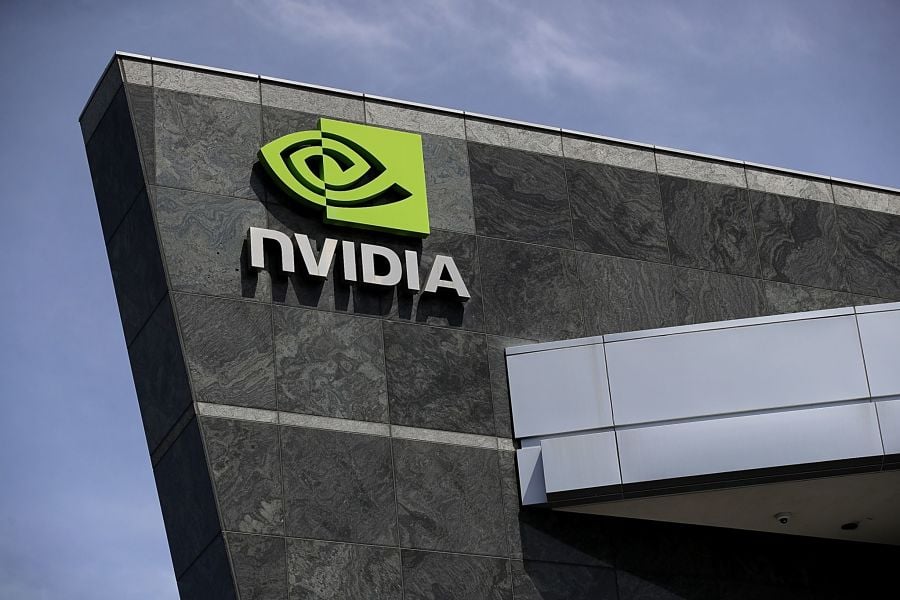

A surprisingly strong earnings season for big tech reaches its grand finale Wednesday afternoon when Nvidia Corp., the artificial intelligence chipmaking giant, reports its results and gives a much anticipated outlook that could set the tone for the second half of the year.
Investors were nervous as technology companies started reporting, with questions about whether the AI boom had run too far and if the group could meet the lofty expectations set for it. A month later, most of those concerns have been put to rest with the S&P 500 Index sitting at an all-time high on the back of strong corporate profits.
So, Nvidia arrives with the expectation that it will confirm the enthusiasm — and potentially offer a glimpse into the future for stocks. The company’s shares have been on a rocket ride since its blow-out fiscal fourth-quarter results and outlook a year ago, soaring more than 200% and adding roughly $1.5 trillion in market value in the past 12 months. With a market capitalization of $2.3 trillion, Nvidia’s weighting in the S&P 500 is more than 5%, up from 2.2% a year ago.
Nvidia shares fell as much as 1.4% on Wednesday after closing at a record the day before.
“It is the leader, and if the demand remains strong in Nvidia then you know that means demand is going to be strong across the board,” said Jay Woods, chief global strategist at Freedom Capital Markets. “That will dictate not only the next leg in the AI-deemed stocks in the semiconductor space, but it could dictate the market.”
Magnificent Seven Rides
An index that tracks seven of the biggest US technology stocks is at a record high after earnings from the likes of Microsoft Corp., Google-parent Alphabet Inc. and Amazon.com Inc. showed that demand for AI services is helping to fuel revenue growth. Alphabet has rallied 13% since beating first-quarter sales estimates and initiating a dividend last month. And Apple Inc., whose shares had slumped as much as 14% this year, is close to turning positive for the year after its strong results.
“The market has gotten a lot of what it’s wanted this earnings season,” said Phil Blancato, chief executive officer of Ladenburg Asset Management and chief market strategist at its parent Osaic Holdings Inc. “Nvidia is sort of icing on the cake.”
After four-consecutive quarters of Nvidia earnings that have blown past Wall Street estimates, investors have come to expect a repeat performance. What’s less certain is how the shares will respond. The stock has gained 0.1%, lost 2.5% and jumped 16% following the company’s last three reports. With an implied day-after-earnings move of about 8%, it’s a high stakes event for the entire market.
Nvidia shares tumbled 10% on April 19, their worst day since March 2020, as investors seemed to grow skeptical of the AI boom. But subsequent earnings reports from Alphabet, Amazon.com, Microsoft and Facebook-parent Meta Platforms Inc. showed how much companies are planning to spend on computing infrastructure. That helped propel the stock to a record close on Tuesday.
“The demand is still outstripping the supply,” said Mike Sansoterra, chief investment officer at Silvant Capital Management. “You can always have an overreaction to the upside and downside in the short term, but fundamentals for the business have not changed.”
Fading Enthusiasm
Still, there are signs that the exuberance is starting to fade. In the options market, the premium for Nvidia calls over puts has disappeared in the past two months, an indication that investors are “hesitant to take long positions ahead of the report,” said Stuart Kaiser, head of equity trading strategy at Citigroup.
To that point, the debate is less about whether Nvidia will top expectations than about how much of a beat is needed for the stock to rally. To avoid a selloff, the company will have to top profit and sales estimates by at least 15%, said David Miller, senior portfolio manager at Catalyst Funds.
In its fiscal first quarter, Nvidia is projected to deliver earnings of $13.2 billion on sales of $24.7 billion, up 544% and 243%, respectively, from a year ago.
Nvidia has beaten its revenue forecast by about $2 billion in each of the past two quarters, and Morgan Stanley analysts led by Joseph Moore expect a similar performance this time. However, the rollout of a new chip dubbed Blackwell later this year has some investors concerned that customers could slow purchases of its predecessor until the new one is available.
“For now our checks continue to point to strong, steady growth even as we transition to Blackwell,” the analysts wrote in a note to clients on Monday.
Beyond Blackwell, there’s also the normal cyclicality of the semiconductor industry, where sales booms can be followed by lulls as customers digest their inventory.
“There’s going to be that day where we hit an air pocket,” said Kim Forrest, founder and chief investment officer at Bokeh Capital Partners. “I don’t know if it’s this quarter, next quarter, next year or 10 years from now, but I know that these sales, you know, you tend to build ahead of things and then you pause.”
Top Tech News

Relationships are key to our business but advisors are often slow to engage in specific activities designed to foster them.

Whichever path you go down, act now while you're still in control.

Pro-bitcoin professionals, however, say the cryptocurrency has ushered in change.

“LPL has evolved significantly over the last decade and still wants to scale up,” says one industry executive.

Survey findings from the Nationwide Retirement Institute offers pearls of planning wisdom from 60- to 65-year-olds, as well as insights into concerns.
Streamline your outreach with Aidentified's AI-driven solutions
This season’s market volatility: Positioning for rate relief, income growth and the AI rebound
